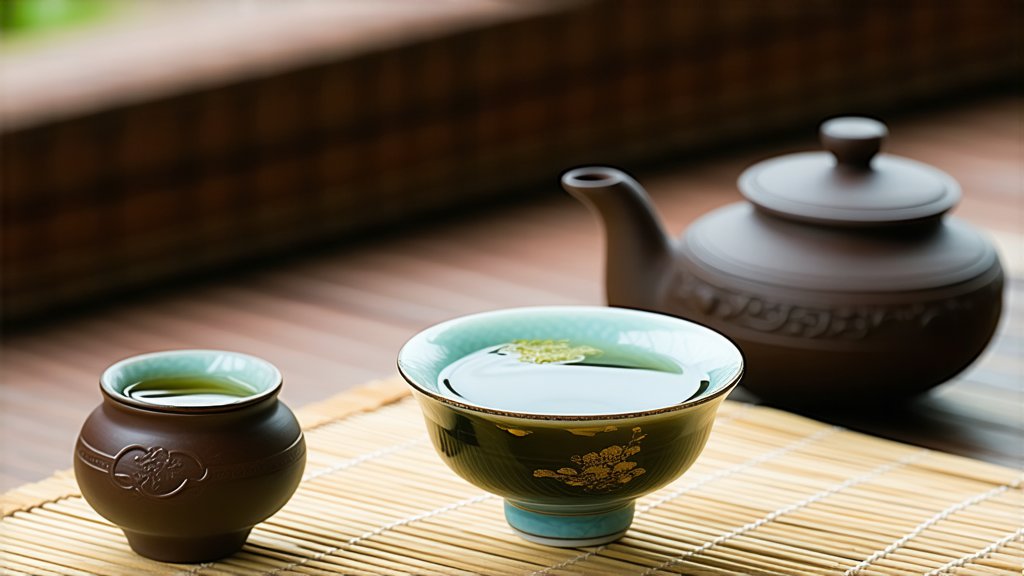
Tieguanyin, often referred to as the "Iron Goddess of Mercy," is a distinguished variety of Oolong tea that hails from the mountainous region of Anxi in Fujian Province, China. This exquisite tea has garnered a reputation for its unique flavor profile, captivating aroma, and meticulous preparation techniques. In this article, we delve into the rich history, varieties, production processes, and the art of appreciating Tieguanyin Oolong tea.
Historical Background
The origins of Tieguanyin can be traced back to the early Qing Dynasty (1644-1912). Legend has it that the tea was discovered by Wei Yin, a poor scholar who found a wild tea plant on a rocky cliff in Anxi. He propagated the plant and named it "Tieguanyin," which means "Iron Goddess of Mercy," after a local deity revered for her benevolence. The name symbolizes the resilience and grace of the tea plant, thriving in harsh conditions yet producing leaves of exceptional quality.
Varieties of Tieguanyin
Tieguanyin encompasses several sub-varieties, each with its own distinct characteristics. The most renowned types include:
-
Xiang Pi Xing (Fragrant Quality): This variety is prized for its high floral fragrance and complex flavor profile. It undergoes multiple rounds of rolling and roasting, enhancing its aromatic compounds.
-
Dan Cui Xing (Single Bush Quality): Grown from ancient tea trees, these leaves are known for their robust flavor and long-lasting aftertaste. Each bush yields only a small quantity, making it highly sought after.
-
Shui Xian (Narcissus): Named after the narcissus flower, this variety is characterized by its delicate and fresh aroma, reminiscent of orchids. It requires precise processing to preserve its subtle scent.
-
Bai Hao (White Down): This type features young leaves covered with fine white down, giving it a distinctive appearance. It offers a milder taste compared to other varieties, appealing to those who prefer a gentler brew.
Production Process
The craftsmanship behind Tieguanyin involves a series of intricate steps designed to unlock the full potential of the tea leaves:
-
Withering: Freshly picked leaves are spread out under the sun or in shaded areas to reduce moisture content by about 30%. This process softens the leaves and initiates enzymatic activity.
-
Tossing and Turning: Leaves are continuously tossed and turned in bamboo baskets or machines to prevent fermentation while gently breaking down cell walls. This step helps release the natural fragrance of the tea.
-
Fixation: The leaves are briefly heated in a wok or steamed to halt fermentation. This step stabilizes the green color and fixes the aroma within the leaves.
-
Rolling: The fixed leaves are rolled into tight spirals or twisted shapes, further breaking down cellular structures and allowing more even drying.
-
Roasting: Depending on the desired flavor profile, the rolled leaves may be roasted over charcoal or electric ovens. Roasting enhances the tea's aroma and develops a toasty undertone.
-
Sorting and Packaging: Finally, the tea is sorted by size and quality before being packaged for sale. Higher grades feature whole leaves, while lower grades may contain broken pieces.
Appreciating Tieguanyin Oolong Tea
To truly appreciate Tieguanyin, one must engage in the traditional Gongfu tea ceremony, which emphasizes precision, patience, and mindfulness. Here's a guide to savoring this exceptional tea:
-
Preparation: Use a Gaiwan (a lidded bowl) or a Yixing clay teapot for optimal flavor extraction. Rinse the vessel with boiling water to warm it up.
-
Infusion: Place approximately 5 grams of loose leaves per 100ml of water ratio into the teapot. Use spring water or filtered water heated to around 95°C (203°F). Steep the first infusion for about 15 seconds, gradually increasing steeping time for subsequent infusions.
-
Aroma: Before taking a sip, inhale deeply from the cup or lid to capture the tea's aromatic bouquet. Note any floral, fruity, or roasted notes present.
-
Tasting: Take small sips, allowing the tea to coat your palate fully. Pay attention to the balance between sweetness, bitterness, and astringency, as well as the length of the aftertaste.
-
Observation: Examine the wet leaves after brewing. High-quality Tieguanyin will have vibrant green leaves with red edges, indicating proper oxidation during processing.
In conclusion, Tieguanyin Oolong tea is not merely a beverage; it embodies centuries of tradition, artistry, and cultural significance. From its mythical discovery to its meticulous production methods and ceremonial consumption practices, Tieguanyin continues to enchant tea enthusiasts worldwide offering a window into the soul of Chinese tea culture.